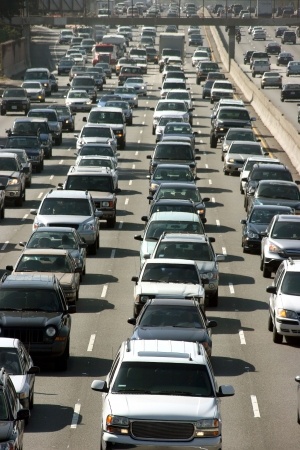Could One Question Change Your Life?

 Have you ever found yourself saying “yes” when inside a voice was screaming, “Oh no!!! I am going to regret this later.”
Have you ever found yourself saying “yes” when inside a voice was screaming, “Oh no!!! I am going to regret this later.”
Last week I was talking to a client about how it’s hard to say “no,” to a colleague when you know you can help them and you want to be of service. Sometimes it’s hard to realize the full cost of a commitment until you are actually doing it and experiencing the fall-out.
Similarly, in this day and age, I keep reading the phrase “maxed out.” But how do you really know if you’re there? Most of us just keep adding things to our to-do list without subtracting anything else. So the pertinent question becomes, do you know when to stop adding “one more quick/easy thing” before it becomes the proverbial straw that breaks the camel’s back – and you feel yourself moving from maxed out, to breakdown.
So when I found this analogy in the book Personal Kanban by Jim Benson & Tonianne DeMaria Barry, I had to share it with you. Not only is it an apt description, but it can also give you a much easier gauge of when things are heading towards overwhelm before you even get close to that maxed out point.

Benson and Barry differentiate between “capacity,” how much you can fit into your day and “throughput,” which is how much can flow through your day. To visualize this analogy, they use the metaphor of a freeway. With many different drivers, all travelling different speeds, traffic flows when the roads are not nearing full. Drivers can be nimble, easily move lanes, exit and enter.
However, when more and more cars enter the freeway, suddenly the traffic starts to slow to the speed of the slowest cars on the freeway until the road becomes congested with less easy mobility.
And when the road is maxed out, or at full capacity – what happens?
That’s right! It becomes a literal parking lot where no one can move. So yes, perhaps you can fit one more motorcyclist on the road, but even they are not likely going much of anywhere.
I find this analogy so meaningful because it’s a great way to illustrate that even though you might be able to do one more task – at work, at home, volunteering – you need to consider whether that task is really still allowing you to flow to where you want to go. Or is it in fact more akin the slow car you feel trapped behind on the freeway that makes you seethe. (C’mon, admit it – it happens to you too, right?)
The reality is that while we might know how long something took us to do in the past, we’re often horrible at estimating how long things will take in the future. We don’t take into account our mood, interruptions, an oncoming cold – you get the picture. So while capacity can feel productive in the moment, you actually need some slack and freedom (aka flow) to your day to accomplish what’s truly important to you, even with the onslaught of unexpected interruptions and requests on our time.
 So the next time you’re tempted to quickly say “yes” to the colleague/friend/or family member that asks – take a second to stop and reflect.
So the next time you’re tempted to quickly say “yes” to the colleague/friend/or family member that asks – take a second to stop and reflect.
Instead of asking yourself, “Is it possible for me to do this?” (the capacity question),
Ask yourself: “What will be the consequence of less flow and ease on myself, my work, and my family by undertaking this?” (the flow question).
So take a moment and comment below and let me know – do you currently optimize for capacity or flow in your to-do list?
How is it working for you?
P.S. If you’d like some detailed strategies to get into “flow” in your work, grab my complimentary leadership assessment by signing up in the box on the right-hand side of my blog.
[…] last week’s blog post I tackle another way of looking at scheduling up your day and how you might ideally feel during […]
[…] last week’s blog post I tackle another way of looking at scheduling up your day and how you might ideally feel during […]